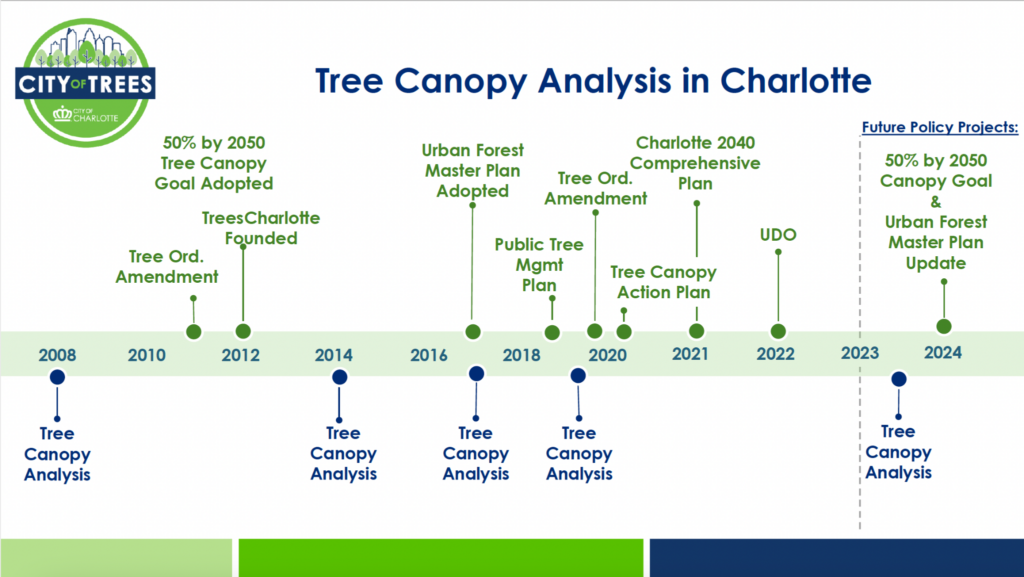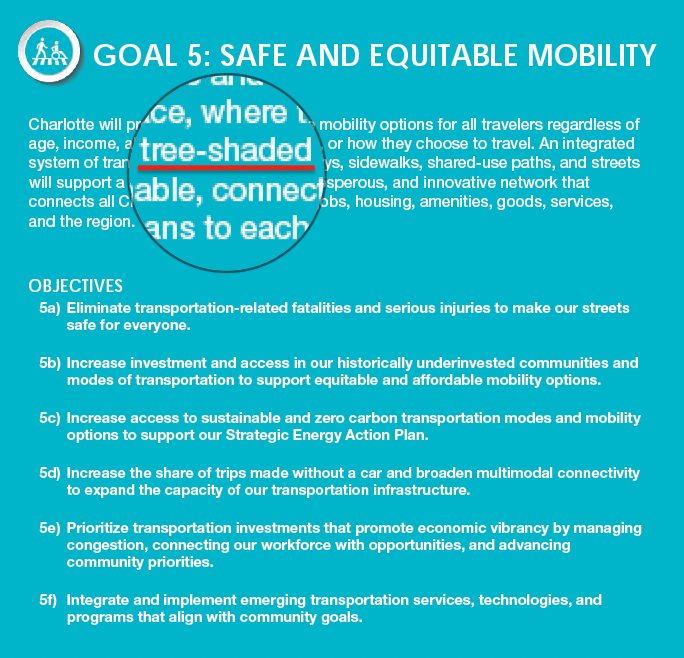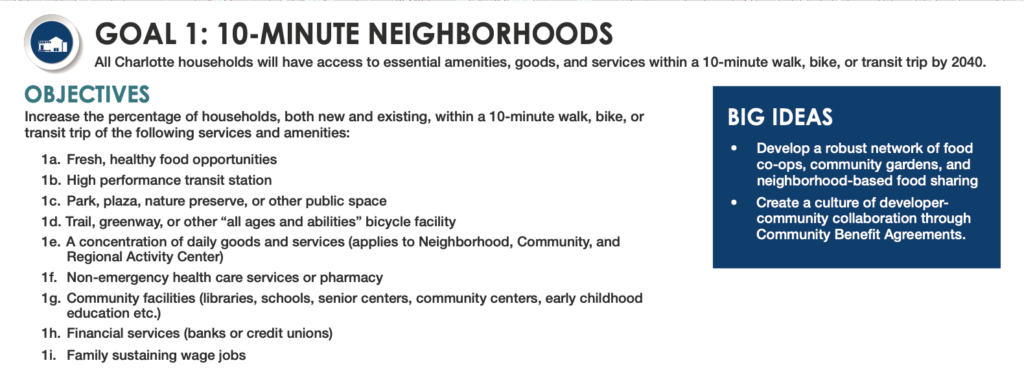City of trees: Planning for the protection and growth of Charlotte’s canopy

As Charlotte’s population grows, how should city leaders balance the needs for more compact development and a healthy tree canopy?
On Monday, Mar. 6, the City of Charlotte’s Transportation, Planning, and Development Committee met to discuss the city’s tree canopy status and upcoming projects. Tim Porter, Charlotte’s Chief Urban Forester, gave an update on the citywide tree canopy analysis, which will be completed this year using top-down GIS techniques, including aerial imagery, LiDAR, and heat mapping.
With this information, the city can determine how much of the land in Charlotte is covered by tree canopy and where more canopy is needed. The most recent analysis will inform the goals that will be laid out in the 2024 Urban Forest Master Plan.
Committee Chair, Council Member Driggs, expressed interest in reviewing the analysis results and accurately pointed out that the city’s current canopy goal of 50% by 2050 will be tough to complete. The current canopy cover (as of 2019) is approximately 45%, down from 49% in 2012. Porter clarified that the 50% by 2050 would be possible in some areas of the city, but not in the denser urban centers.
While it is unlikely that Charlotte will reach 50% canopy cover in every neighborhood (no city in America has been able to reach this goal), efforts can be made to move toward 50% coverage on average. Suburbs and greenfields (real estate development in previously undeveloped areas) can mitigate negative development impacts by committing to 70-90% canopy cover, serving as the lungs of the city and moving the average closer to 50%.
We would like to see the city prioritize tree planting and canopy protection in neighborhoods that are currently lacking sufficient shade. Neighborhoods in north and west Charlotte often experience temperatures several degrees hotter than the tree-lined streets in Charlotte’s southern “wedge”.
We would like to see the city consider a replanting goal. Many other cities, like Houston and New Orleans, have implemented ambitious planting goals to combat rising temperatures and provide shaded pathways to encourage residents to walk or bike without fear of heat-related illness and fatigue during the summer. A replanting goal would support Goal 5.13 in the 2040 Comprehensive Plan to “increase the number of pedestrian and bike routes that are shaded by trees for safety, health, and aesthetic value.”

Similarly, supporting a healthy tree canopy will also help Charlotte to achieve Goal 1 in the 2040 Comprehensive Plan of implementing 10-minute neighborhoods throughout the city. When people have shaded streets, they are more likely to walk and ride bicycles. Participating in these activities can improve health and help connect residents both within and between neighborhoods. As council member Driggs said, “Trees are a big part of the vision for the city.”
We agree. Let’s show it by prioritizing tree canopy goals.

Transportation Planning and Development Committee Boards and Commissions were also briefly discussed. Details can be found here. To apply for a board or commission position, please visit this link.
Watch the recording of the 3/6/23 TP&D Committee Meeting (begins at 00:05:14).
View slides from Tim Porter’s Tree Canopy presentation.
Thanks for reading!
As a nonprofit, community support is essential for us to keep doing what we do — including providing free articles like this. If you found this article helpful, please consider supporting Sustain Charlotte so we can continue advocating for a better future and working with residents, neighborhood organizations, government agencies, nonprofits, and businesses to solve the most critical challenges to Charlotte’s long-term social, economic, and environmental health.
Want to stay in the loop? Subscribe to our free, weekly newsletter and follow us on Twitter, Facebook, and Instagram.
